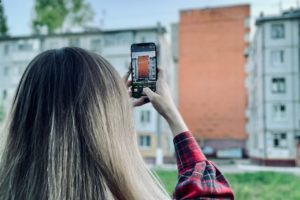Vandalism – a term that, unfortunately, is all too familiar to commercial property owners. Acts of intentional damage can bring about significant financial consequences. But understanding the different forms of vandalism can go a long way in minimizing their impact. From a sociological perspective, vandalism isn’t a monolithic concept. It assumes various forms, each presenting its unique challenges. Understanding the motives behind these destructive acts, as outlined by renowned sociologist Stanley Cohen, can guide you in better protecting your property and minimizing your financial risk. Let’s explore these seven types of vandalism and see how commercial property owners can stay prepared:
1. Acquisitive Vandalism: A Threat to Your Valuables
Acquisitive vandalism, characterized by the act of destruction to acquire goods or money, poses a significant threat to businesses. For instance, a burglar might break a window to steal merchandise. As a property owner, installing secure locks, surveillance cameras, and alarm systems can deter such actions. Insurance policies covering theft are critical in this scenario.
2. Tactical Vandalism: Unwanted Attention
Tactical vandalism is about getting noticed. Protestors might deface property to draw attention to their cause. While it’s tough to predict such occurrences, maintaining a neutral stance in controversial matters can keep your property out of the firing line. Vandalism coverage in your property insurance policy can provide the needed safety net.
3. Ideological Vandalism: Making a Statement
This form of vandalism arises when political, religious, or social ideologies come about. Insurance that covers acts of vandalism can safeguard your property against the financial impact of such acts.
4. Vindictive Vandalism: When Personal Becomes Professional
Vindictive vandalism stems from personal vendetta and spite, and can unexpectedly land at your doorstep. Making adequate security measures and a robust insurance policy are essential.
5. Play Vandalism: Destructive Fun
Play vandalism is destruction for fun, often by kids or teenagers. For instance, ensuring your property is well-lit and investing in high-quality security systems can make it less attractive to these mischievous thrill-seekers. Furthermore, a comprehensive insurance policy will help cover the costs of any damages.
6. Malicious Vandalism: The Love for Chaos
Malicious vandalism lacks concrete motive beyond the desire to create chaos. An individual who lights a fire in a public park with no particular motive other than to watch things burn would be engaging in malicious vandalism. Enhanced security, vigilance, and insurance coverage are necessary to shield your business from such random acts.
7. Epidemic Vandalism: The Domino Effect
Epidemic vandalism involves large-scale destruction triggered by a specific event like a sports victory or political unrest. Here, the best defense lies in a good offense. Proactive security measures, along with an insurance policy that covers riot damage, are essential.
Understanding the seven types of vandalism not only provides insight into the potential risks but also guides you in selecting the right insurance coverage to protect your business assets. This knowledge empowers commercial property owners to minimize their financial risk and safeguard their businesses against unforeseen damages. Remember, the cost of an insurance policy is insignificant compared to the financial burden of an unexpected vandalism event.
Protect your business, prepare for the future, and ensure peace of mind by recognizing and preparing for these seven faces of vandalism.






